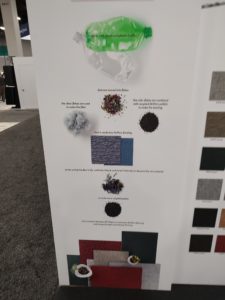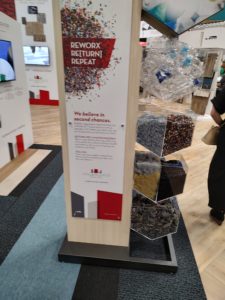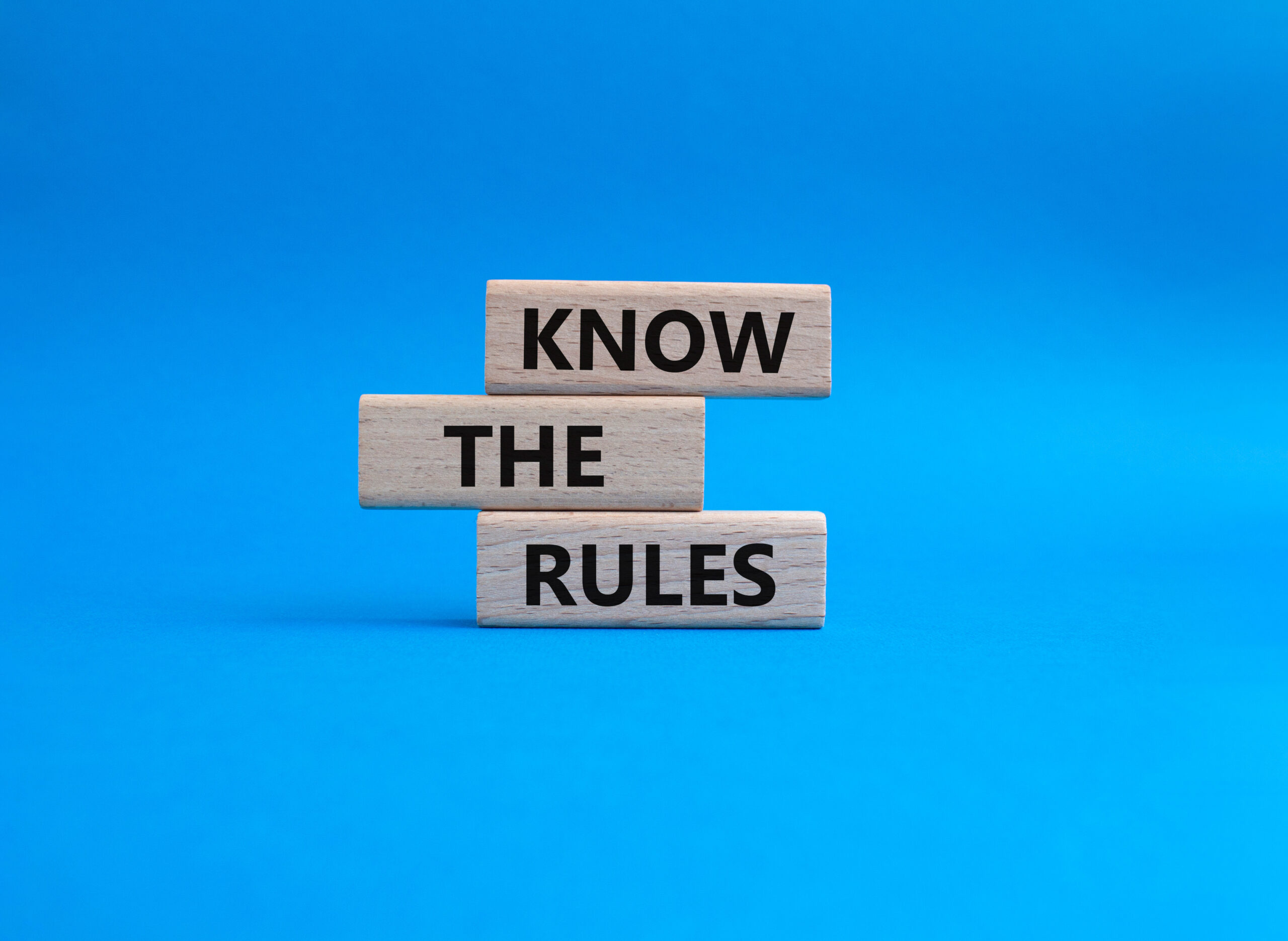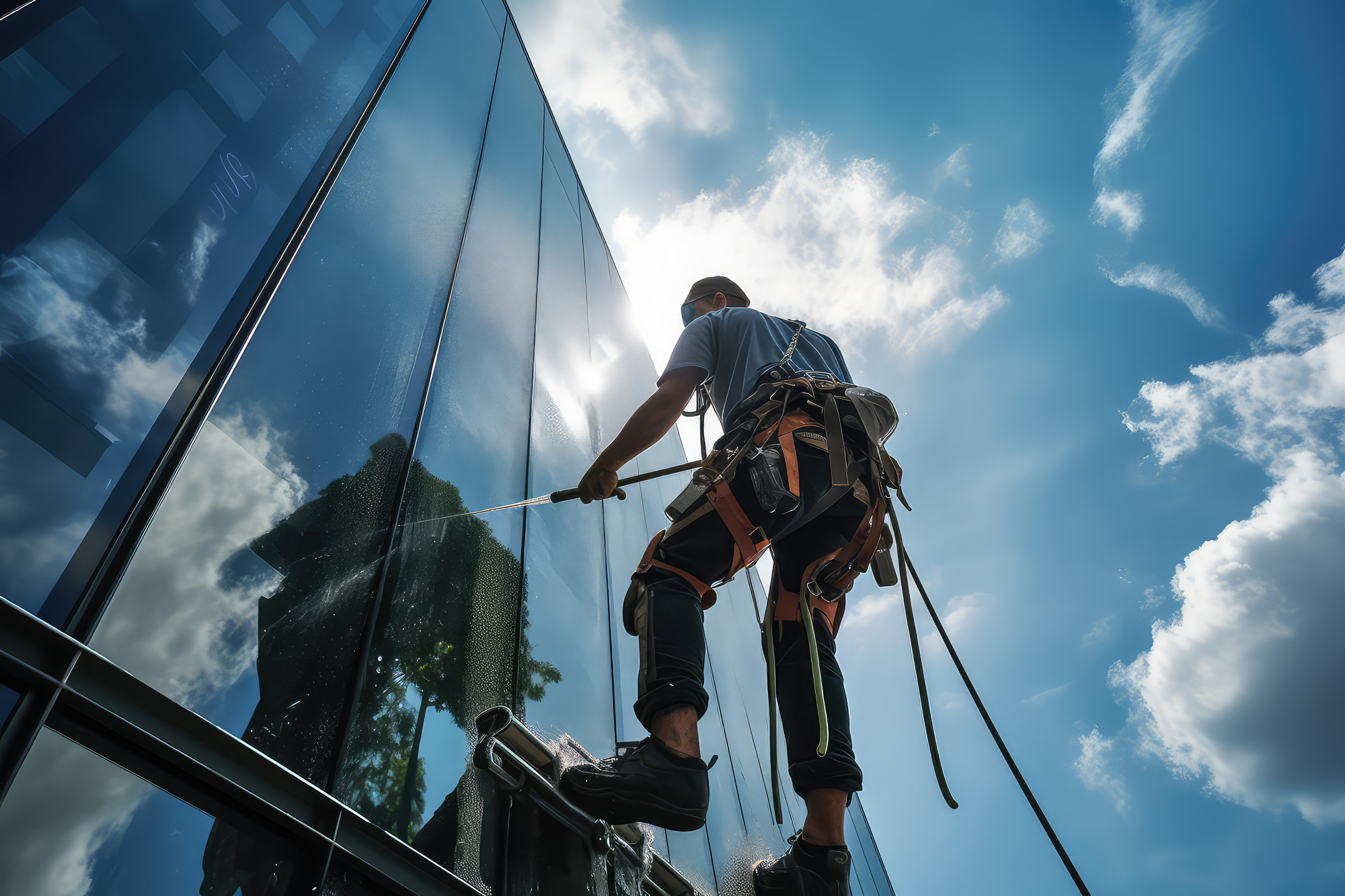I’m just back from the Surfaces show in Las Vegas, where 700 plus vendors of carpet, stone, wood, vinyl and anything else that makes up the floors, counters etc. of a home or building show their wares. So why go as a house cleaner? Because this allows me to see what the trends are of materials and to talk to the technical people from the manufacturers to see what problems have come up due to maintenance issues and what their care recommendations are.
Recycled Plastic Terrazzo

From Soda Bottles To Carpet

Even more recycled surfaces

Two major themes were evident at this year’s show: Sustainability and Easy Care. Mohawk bragged about recycling 6 Billion drink bottles into Polyester fiber for their carpets. Other carpet mills had similar claims. Many of the Luxury Vinyl Tile (LVT) manufacturers had similar stories; one firm is grinding up waste plastic of all kinds to use for accent colors in terrazzo. Six or seven years ago the big story was natural: oiled wood, natural fiber rugs, laminate among others. Many of these are water sensitive and difficult to clean. Today, waterproof is the word of the day.
Luxury Vinyl Tile (LVT)
LVT represents the easy-care trend. The LVT category has grown from nothing six years ago to 30% of the flooring market now. LVT is basically a printed vinyl sheet over a core material and a wear layer over the printed vinyl usually with an added polyurethane top coat. The original LVT is on a vinyl core and is flexible, but susceptible to heat. LVP plank is rigid and normally on a more stable core, most often SPC or Stone Poly Core. All of these products are billed as Water Proof, but some are more water proof than others. A few manufacturers allow warranties even for use of steam mops, but most are opposed to their use on their products. This is due to either causing heat damage if left on a spot too long, or by the steam getting down between the planks, then condensing, resulting in mold and other problems. One manufacturer’s care instructions for their waterproof floor said not to use water to clean. I checked with their after–care manager who told me a damp flat mop was perfect; it was just buckets and puddles they didn’t want. This is the kind of clarification I get by going to Surfaces.
Resurgence of Laminate
Laminate is making a resurgence. Because it has a natural core, High Density Fiberboard, it is marketed as a greener alterative to LVT. All the major manufacturers have taken pains to water proof their products at least from the top side. The bottom may still dissolve in a flood. The big change is in the locking systems between boards that are much tighter. A few of these products are warranted with a steam mop but most are not. A reminder: these improvements have only been in the last few years and there is still lots of installed, non-water proof laminate out there.
Waterproof Wood
This was the new hot product shown with slight variations by a number of manufactures. The promise is that now you can have a real wood floor and not have to worry about water. We will see if this goal is fulfilled. It is constructed much like LVT except that instead of a printed vinyl layer they have a real wood layer 0.6 millimeters thick. That’s about the thickness of a business card. The idea is that a sliver of wood that thin won’t warp or cup if it gets wet. There were demos of these boards sitting in water for 3 days with no damage. As long as what you are walking on is real wood, no matter how thin, it can be called a real wood floor. This product was also hailed as more sustainable since to put a traditional wood floor in a 2500 sq. ft. house would take 20 logs, this would only take 2. This is a new product; we will see how it holds up. For now, I would say it should clean like LVT.
Customers, both residential and commercial, are asking for products that are easy to care for while also supporting sustainability claims. This should make our job as cleaners easier when dealing with these newer materials, but remember there is still a lot of older material out there. As professionals we need to be able to deal with all of it. On all these floors avoid high Ph cleaners and acids. High Ph can start to dissolve the polyurethane finish and acid cleaners can also damage it. On most of these floors, use caution if attempting to clean with a steam mop. I’ll be looking to see what worked and what didn’t at the show next year.





